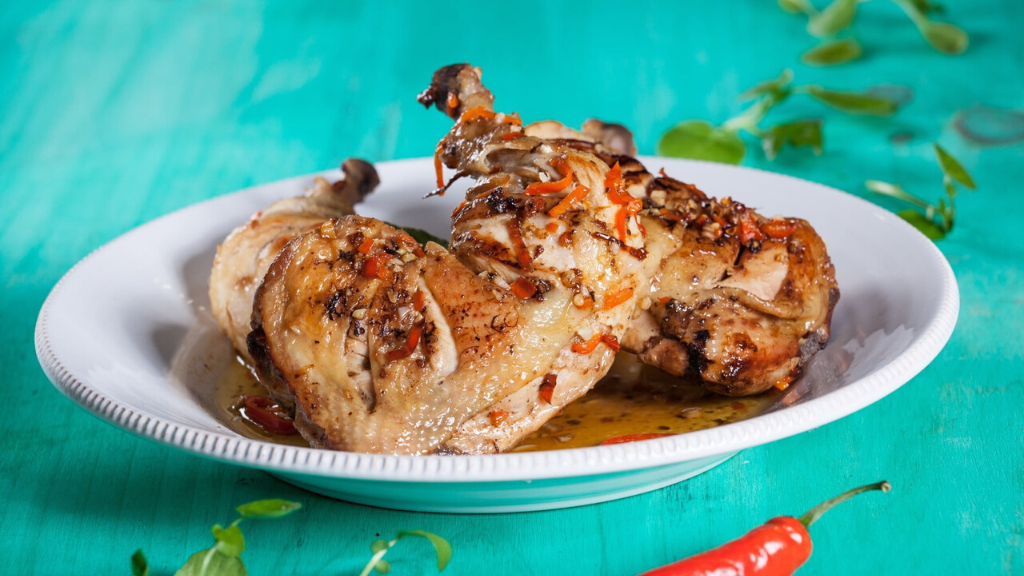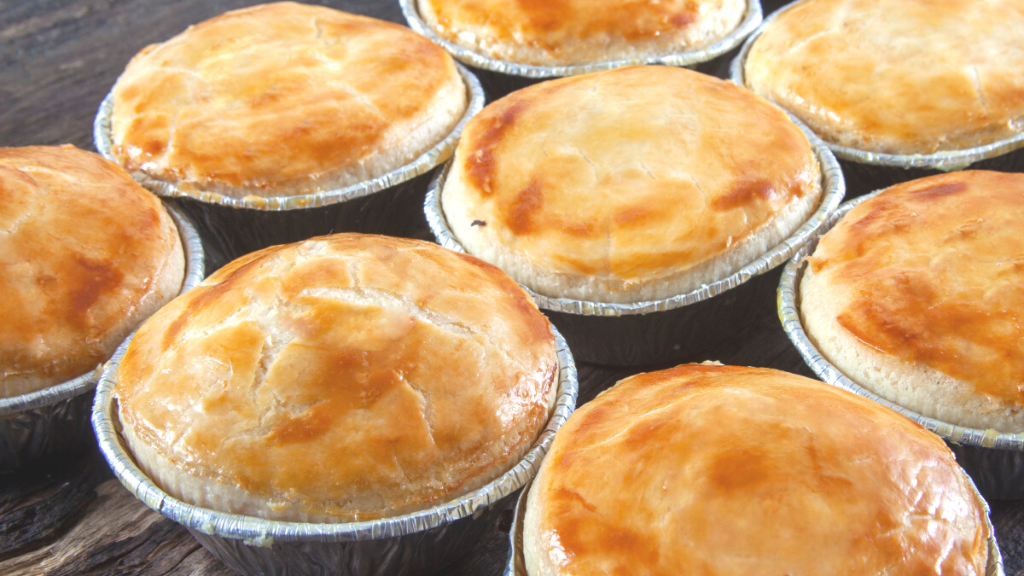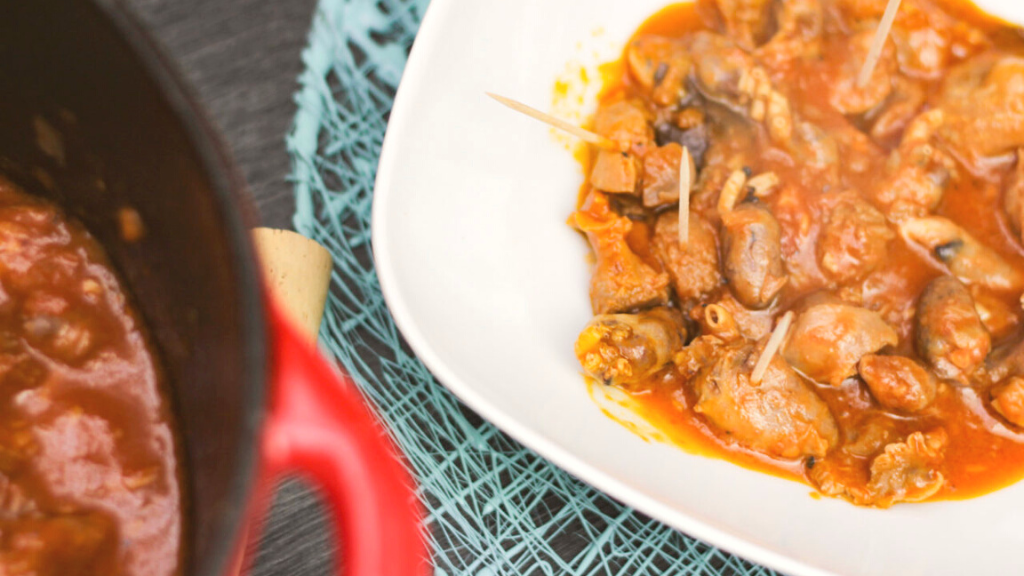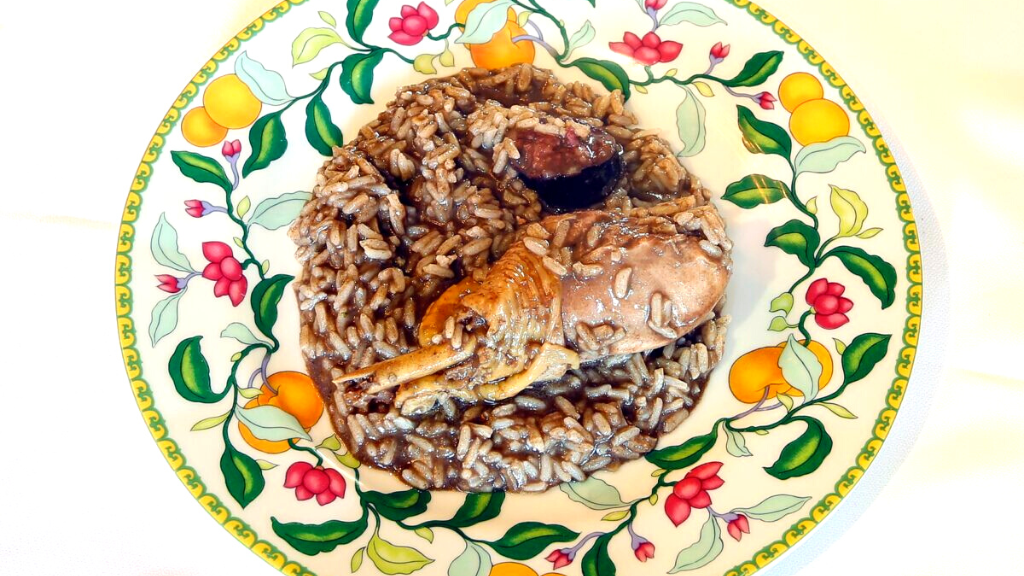Best typical Portuguese chicken dishes

When you think about chicken dishes from Portuguese cuisine, it’s quite likely that the first thing that comes to mind is peri-peri chicken, which we refer to in Portuguese as frango de churrasco. Juicy meat, crispy skin, smokey untones and the heat of peri-peri sauce which you can add to taste – what’s there not to like?
Even if this type of chicken barbecue is Portugal’s most famous chicken dish, that doesn’t mean there aren’t others worth exploring when you travel to our country. In fact, you may be able to taste peri-peri chicken in different corners of the world, but some of the dishes we are about to explore can only be found inside the Portuguese territory or, at the most, in Portugal’s former colonies even if in different versions which are likely to have evolved locally.
These are some of the Portuguese chicken dishes you should try:
Portuguese snacks and appetizers prepared with chicken
Canja de galinha | chicken soup
 One may at first think that there is nothing particularly Portuguese about chicken soup. After all, many regions of the world prepare chicken based broths, which are often associated with their warming and even healing properties. The history of Portuguese chicken soup, or canja, is intrinsically connected with the voyages of the Portuguese in Asia in the 1500s. It was during those days that the Portuguese traced the maritime way to India, following their desire to actively participate in the spice trade. It was here that they started eating and eventually cooking chicken based broths, which were already being prepared locally, namely in the region of Goa which eventually became a Portuguese territory. In the language of the neighboring Malabar coast, the word kanji stands for a preparation of water with rice, which is very similar to canja indeed.
One may at first think that there is nothing particularly Portuguese about chicken soup. After all, many regions of the world prepare chicken based broths, which are often associated with their warming and even healing properties. The history of Portuguese chicken soup, or canja, is intrinsically connected with the voyages of the Portuguese in Asia in the 1500s. It was during those days that the Portuguese traced the maritime way to India, following their desire to actively participate in the spice trade. It was here that they started eating and eventually cooking chicken based broths, which were already being prepared locally, namely in the region of Goa which eventually became a Portuguese territory. In the language of the neighboring Malabar coast, the word kanji stands for a preparation of water with rice, which is very similar to canja indeed.
Contemporary Portuguese canja can be prepared with rice or tiny pasta, that is massinhas featuring different shapes such as bagos or pevides (similar to the shape of a grain of rice, as pictured here), estrelinhas (little stars) or cuscus (round shape). On an otherwise straightforward canja, and depending on the cook, you may also find in your soup plate shredded chicken, a boiled egg and even chicken giblets, particularly when the soup is prepared in a more rural context, where the soup could even be enjoyed as a full dinner instead of as just an appetizer.
Warm yourself up with some canja in Lisbon at:
O Galito
📍Rua Adelaide Cabete 7, 1500-441 Lisbon
Empada de galinha | chicken pie
 Pies stuffed with chicken and other meats have been around since Medieval times. It’s curious to think that, initially, the pastry was used as a way to wrap the prized filings, and it wasn’t even important if it would taste that good. In fact, it would probably get dirty as a disposable package would today, and the important thing would be to feast on the contents of the pies. How things have changed! Today, a good pie has well seasoned stuffings indeed, but it’s the fairly juicy insides in contrast with the rich pastry casing that makes biting into a pie such a delight.
Pies stuffed with chicken and other meats have been around since Medieval times. It’s curious to think that, initially, the pastry was used as a way to wrap the prized filings, and it wasn’t even important if it would taste that good. In fact, it would probably get dirty as a disposable package would today, and the important thing would be to feast on the contents of the pies. How things have changed! Today, a good pie has well seasoned stuffings indeed, but it’s the fairly juicy insides in contrast with the rich pastry casing that makes biting into a pie such a delight.
In Portuguese cafes you can almost always find individual chicken pies, going by the name of empada de frango or empada de galinha. Empadas are one of Portugal’s most beloved savory snacks, alongside a tasty range of meat and fish fritters. Also known as empadinhas (which is the diminutive of empada denoting their small size), Portuguese chicken pies feature shredded chicken on the inside, while the wheat based pastry can vary. Most commonly you’ll find traditional shortcrust style pastry, but puff pastry is not at all uncommon either – in both cases the pies are oven baked, and never fried. Empadas are not to be mistaken with empadão, a family style oven baked dish which we look into below, or Latin empanadas, which are usually shaped as a half moon and can be oven-baked or fried.
Munch on an empada de galinha in Lisbon at:
A Galinha Balbina
📍Av. Óscar Monteiro Torres 64, 1000-261 Lisbon
www.instagram.com/agalinhabalbina
Moelas | chicken gizzards
 To understand moelas as a dish, we first need to take a quick lesson in bird anatomy. Moelas is Portuguese for gizzards, that is, the gastric mill found in some animals’ digestive tract, including birds. When we speak about gizzards in Portugal we’re by default referring to chicken gizzards.
To understand moelas as a dish, we first need to take a quick lesson in bird anatomy. Moelas is Portuguese for gizzards, that is, the gastric mill found in some animals’ digestive tract, including birds. When we speak about gizzards in Portugal we’re by default referring to chicken gizzards.
Chicken gizzards can be cooked on their own or as a part of pipis (see below), which besides the moelas also includes assorted giblets. Even though this is a petisco which can easily take us down the road of nostalgia, when taverns would slowly stew this kind of preparation in detriment of other snacks with primer cuts of meat as you most commonly see these days, in a time when food sustainability and low waste are so talked about, we think moelas are more relevant than ever! For moelas to be tasty and, particularly, to have an appealing texture, they ought to be cooked right. The tradition of Portuguese cuisine calls for slow cooking the gizzards in a rich tomato based sauce, until they are moist and tender. Depending on the cook, the sauce could be enriched with beer, wine and aromatics such as onions, garlic and bay leaf. What ends up happening is that the gizzards themselves end up being more of a vehicle to scoop up the rich tasting sauce, which you can also savor soaking some bread after snacking on the moelas with a toothpick, as it is customary done in taverns while having a drink.
Ask for a saucy serving of moelas in Lisbon at:
A Muralha Tasca Típica
📍Rua Jardim do Tabaco 112, 1100-139 Lisbon
Pipis | chicken giblets in a rich sauce
 The preparation of pipis, that is chicken giblets including gizzards, heart and liver, doesn’t differ at all that much from moelas above. The name pipis supposedly refers to the chirping sounds chicken and other birds do.
The preparation of pipis, that is chicken giblets including gizzards, heart and liver, doesn’t differ at all that much from moelas above. The name pipis supposedly refers to the chirping sounds chicken and other birds do.
Pipis are a quintessential petisco of the traditional taverns in Lisbon and the Zona Saloia, that is the neighboring area of the capital to the north, around Mafra, which has historically been where most of the food to be consumed in the city would be produced. Even though they have been eaten for centuries, their popularization happened mostly around the 19th century, when peasants from the Zona Saloia would come to Lisbon during the day to sell their products to the city dwellers. The first taverns were actually establishments where you would leave your animals as you’d go about your day selling produce and other farm products. Little by little taverns started selling drinks and, to encourage more drinking, snacks started being featured amongst the offerings too. Affordable stews such as those made with giblets were a good option for the peasant population, which could munch on something tasty, filling and cheap, before doing the trip back to the countryside. Until today, pipis (just like moelas) are synonymous with old school type of taverns. If you order pipis that would indeed be a very typical Lisbon experience!
The more typical your Portuguese tasca is, the more likely it is that it serves pipis, moelas and old school dishes such as iscas (liver). Try at:
O Lutador
📍Rua da Junqueira 1C, 1300-383 Lisbon
https://restauranteolutador.pt
Typical Portuguese chicken dishes
Frango na púcara | chicken stew in clay pot
 Also known as frango na caçarola, frango na púcara is a chicken stew prepared in a special clay pot – this is precisely what the word púcara (or púcaro) means in Portuguese. This is a typical recipe from the central region of Portugal, whose inception is disputed by the towns of Óbidos, Tomar and Leiria. The truth is that today you can enjoy frango na púcara all over Portugal, including right here in Lisbon.
Also known as frango na caçarola, frango na púcara is a chicken stew prepared in a special clay pot – this is precisely what the word púcara (or púcaro) means in Portuguese. This is a typical recipe from the central region of Portugal, whose inception is disputed by the towns of Óbidos, Tomar and Leiria. The truth is that today you can enjoy frango na púcara all over Portugal, including right here in Lisbon.
Even though dishes like grilled chicken are the most common today, when we have birds which were raised almost specifically for that purpose, having been engineered to have tender meat, the truth is that back in the day, chickens and hens were raised at home and would generally yield tougher meat. As such, slow cooked recipes such as this stew in a clay pot would guarantee that the meat would be moisturized during the cooking process, absorbing much of the rich liquid it’d be cooked in, and so resulting in succulent meat. Frango na púcara features pieces of chicken cooked in a broth prepared with tomatoes, onions, garlic, wine (it can be regular white table wine or even include a little bit of Port wine for a nice depth of flavor), and aromatics such as bay leaf and parsley. To enhance the meaty flavors of the chicken, some cooks add chopped cured ham into the stew too. In some homes and establishments, potatoes would be added into the preparation but, in some restaurants, you can also have frango na púcara with a side of French fries.
Feast on traditional frango na púcara in Lisbon at:
Delfina Cantina Portuguesa
📍Praça do Município n.º 23, 1100-365 Lisbon
www.almalusahotels.com/delfina
Arroz de cabidela | braised chicken rice in its own blood
 There’s perhaps no other Portuguese chicken dish which is as divisive as cabidela – which can also go by the names arroz de cabidela, galinha de cabidela or, in the north of Portugal, pica no chão. Cabidela stands for a stew of chicken and rice, which is finished with the addition of chicken blood and a splash of vinegar, which prevents the blood from coagulating once heated up. If you’re wondering about the taste of cabidela, be rest assured that it’s not as strong as the blood added may suggest it would be. Once the blood is cooked what it mostly does is add an earthy aftertaste to the dish and, above all, grant it a velvety rich texture. Think about cabidela as a hybrid between a risotto and a chicken stew.
There’s perhaps no other Portuguese chicken dish which is as divisive as cabidela – which can also go by the names arroz de cabidela, galinha de cabidela or, in the north of Portugal, pica no chão. Cabidela stands for a stew of chicken and rice, which is finished with the addition of chicken blood and a splash of vinegar, which prevents the blood from coagulating once heated up. If you’re wondering about the taste of cabidela, be rest assured that it’s not as strong as the blood added may suggest it would be. Once the blood is cooked what it mostly does is add an earthy aftertaste to the dish and, above all, grant it a velvety rich texture. Think about cabidela as a hybrid between a risotto and a chicken stew.
Cabidela is a very representative dish of traditional Portuguese cuisine, and one that was exported to different corners of the world as explorers from Portugal reached parts of the Americas, Africa and Asia. In Macao, for example, you will still find duck cabidela, a local adaptation of Portuguese chicken cabidela. While in India, and more specifically in the region of Goa which was a former Portuguese colony, sarapatel (a stew made with blood of different animals and vinegar), is still one of the most iconic dishes of Goan cuisine.
Dare to try cabidela in Lisbon at Michelin guide highlighted restaurant:
Solar dos Nunes
📍Rua dos Lusíadas 68, 1300-366 Lisbon
Frango à passarinho | Portuguese style fried chicken
 Portuguese style fried chicken has nothing to do with the international (or should we say US American?) concept of fried chicken. For starters, it doesn’t have a batter and, sometimes, it’s more pan fried than actually deep-fried, and this is done in olive oil.
Portuguese style fried chicken has nothing to do with the international (or should we say US American?) concept of fried chicken. For starters, it doesn’t have a batter and, sometimes, it’s more pan fried than actually deep-fried, and this is done in olive oil.
Most of the flavor of frango à passarinho comes from a marinade which we call vinha d’alhos, that is wine and garlic, which is actually at the origins of the Indian dish vindaloo. So pieces of chicken (sometimes just the thighs) are marinated in vinha d’alhos, along with salt, pepper and paprika or chili flakes, until the bird tenderizes and soaks up as much flavor as possible. It’s then removed from the marinade and pan-fried. Once the meat is cooked through, the remaining marinade is added until it is reduced in the pan and gives the chicken a shiny finish that guarantees that the meat will be not only flavorful but also succulent on the palate. Frango à passarinho can be eaten as a petisco or, when side dishes such as fries and salad make it to the plate, it is also sometimes served as a main meal, particularly as a daily special in no-frills eateries.
Taste how Portuguese fried chicken has nothing to do with the likes of KFC at:
Ourives Petisqueira
📍Calçada de Santo André 11, 1100-495 Lisbon
www.instagram.com/ourivespetisqueira
Empadão de frango | chicken pie with mashed potatoes
 Empadão de frango is the general term for oven-baked chicken pie. Most often than not, it consists of a filling of shredded chicken in between layers of creamy mashed potatoes, but it can also be prepared with rice. In that case, we’d be talking about an empadão de arroz. Empadão de frango is not to be mistaken with empada de frango above (individual chicken pies wrapped in pastry), or even with empadão de frango from Brazil. The Brazilian style of chicken pot pie isn’t prepared with layers of potato puree like here in Portugal, but instead is done with pastry, almost as if it was a family sized version of the Portuguese empada, with the meat being flavored slightly differently.
Empadão de frango is the general term for oven-baked chicken pie. Most often than not, it consists of a filling of shredded chicken in between layers of creamy mashed potatoes, but it can also be prepared with rice. In that case, we’d be talking about an empadão de arroz. Empadão de frango is not to be mistaken with empada de frango above (individual chicken pies wrapped in pastry), or even with empadão de frango from Brazil. The Brazilian style of chicken pot pie isn’t prepared with layers of potato puree like here in Portugal, but instead is done with pastry, almost as if it was a family sized version of the Portuguese empada, with the meat being flavored slightly differently.
Empadão is an incredibly versatile dish, and you could virtually layer it with any shredded meats such as ground beef (empadão de carne) or even canned tuna (empadão de atum). If typical Portuguese chicken dishes are indeed what you’re after, make sure you’re getting served an empadão de frango.
You may find empadão de frango listed as a daily special in one of Lisbon’s restaurants during the week. But your best bet would be to get invited to eat at home with a local, as this is the type of food the Portuguese usually eat at home.
Jardineira de frango | chicken braise with vegetables
 Jardineira de frango (garden style chicken) or frango à primavera (spring style chicken) are almost interchangeable terms for the same chicken dish, which varies according to the cook.
Jardineira de frango (garden style chicken) or frango à primavera (spring style chicken) are almost interchangeable terms for the same chicken dish, which varies according to the cook.
Generally speaking, this is a recipe that features braised chicken alongside assorted vegetables. These vegetables can even be the type of bagged frozen mix you get at the supermarket, including tiny pieces of carrots, green peas and/or green beans. This isn’t a complicated dish, but one that is meant to warm you up while delivering a pleasant familiar flavor, and packing enough vegetables on the plate – something that is not to take for granted when you go out to eat in Portugal, unless you care to ask for the vegetable soup of the day.
Just like empadão de frango above, jardineira is the type of dish that is more commonly featured as a daily special rather than on restaurants’ permanent menus. This is indeed true because it is a good representation of Portuguese homestyle food, which is one more reason why it should not be overlooked!
Frango de churrasco | peri-peri chicken
 Last but not least, let’s put the spotlight on Portugal’s favorite chicken dish, the one that BBQ loving tourists tend to look for when traveling in our country: peri-peri chicken! While the true origins of this grilled chicken dish could be argued, somewhere between Portugal and the southernmost parts of the African continent, there’s no doubt that this is a staple all over Portugal and you will certainly not have a hard time coming across excellent frango de churrasco in Lisbon or anywhere in the country.
Last but not least, let’s put the spotlight on Portugal’s favorite chicken dish, the one that BBQ loving tourists tend to look for when traveling in our country: peri-peri chicken! While the true origins of this grilled chicken dish could be argued, somewhere between Portugal and the southernmost parts of the African continent, there’s no doubt that this is a staple all over Portugal and you will certainly not have a hard time coming across excellent frango de churrasco in Lisbon or anywhere in the country.
Unlike peri-peri chicken abroad, here in Portugal the chicken is usually spatchcocked and grilled over charcoal. The temperature control results in super moist and succulent meat, while the outside skin gets charred nicely. We do not tend to marinate the birds much before cooking, and this is certainly not done with chili. Instead, when the chicken is removed from the grill, it gets a nice brushing of peri-peri sauce, should you wish to add some heat to your meat. Otherwise, peri-peri sauce will be placed on your table for you to sprinkle it on your dish according to taste – this is great, as you can work up your tolerance little by little and people around the same table who may have different taste and spice preferences, can still share the same order.
We have lots of recommendations regarding charcoal grilled chicken in Lisbon here!
Feeling hungry for Lisbon? Let us help you satisfy your Portuguese food cravings with a healthy dose of culture and entertainment – join one of our food & cultural walks and follow our tips on Instagram. Share your posts by tagging us: @tasteoflisboa #tasteoflisboa
Feed your curiosity on Portuguese food culture:
Best peri-peri chicken restaurants in Lisbon
World foods you didn’t know were Portuguese
Where to eat the best sandwiches in Lisbon
Real people, real food. Come with us to where the locals go.
Signup for our natively curated food & cultural experiences.
Follow us for more at Instagram, Twitter e Youtube
